I did think this would be a good oppotunity to show many of you that we don't just "dip" them and they come out nice and shiny. There is a lot involved that is not shown here, like all the dent work, polishing, soldering,etc. you can see that on my shop's web site. But at least now maybe some will have more understanding of the hard work that goes into plating large brass. I don't know of any sites showing images of tubas being plated so I thought this would be a good exercise in posting images on tubenet while at the same time giving others a chance to visualize the plating process. We electroless plated the instrument in order to get a good uniform coat of nickel. I hope you find the images interesting. Let me know your thoughts.
I apologize for the long download, I think it will be worth it! Enjoy!
Daniel C. Oberloh
Oberloh Woodwind and Brass Works
http://www.oberloh.com
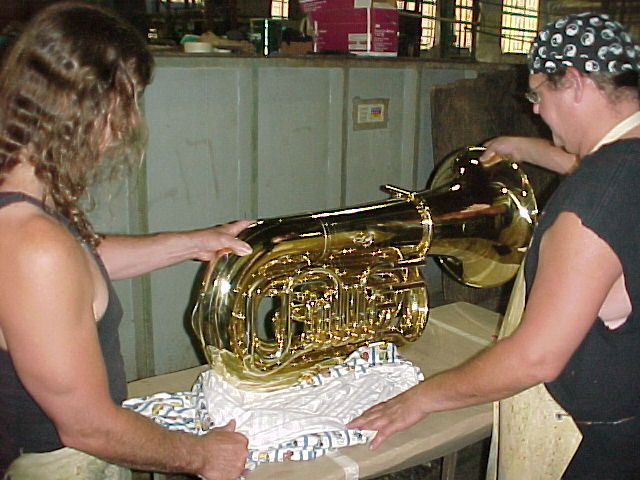
Here is the tuba polished and ready to be prosessed.
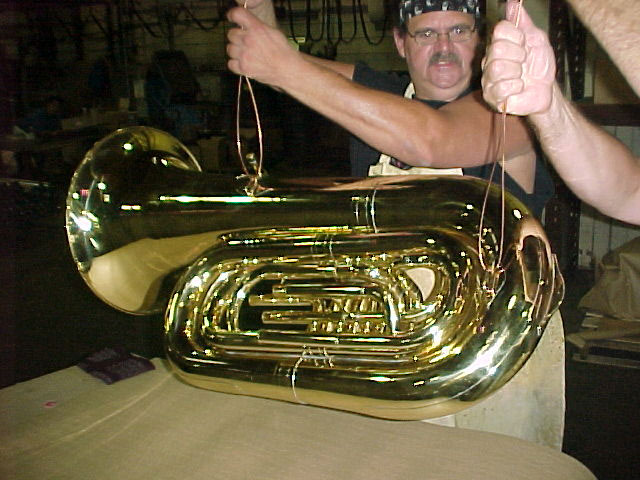
Racked and ready to be cleaned in the Alkali wash.
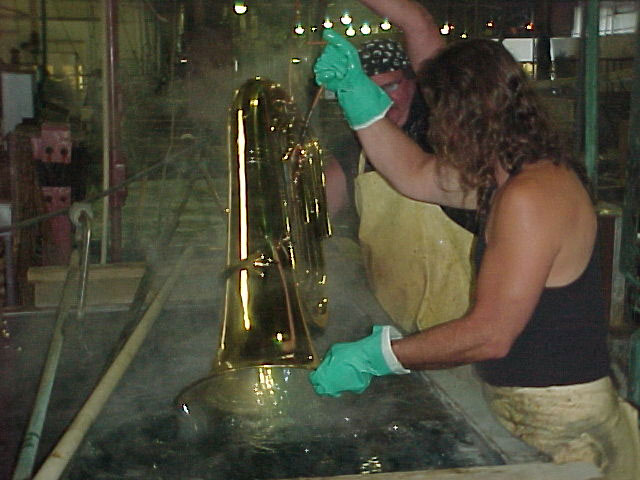
cleaning.

More cleaning
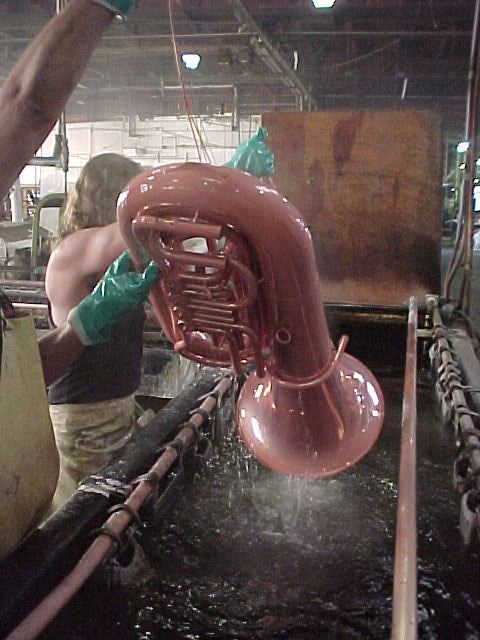
Copper strike
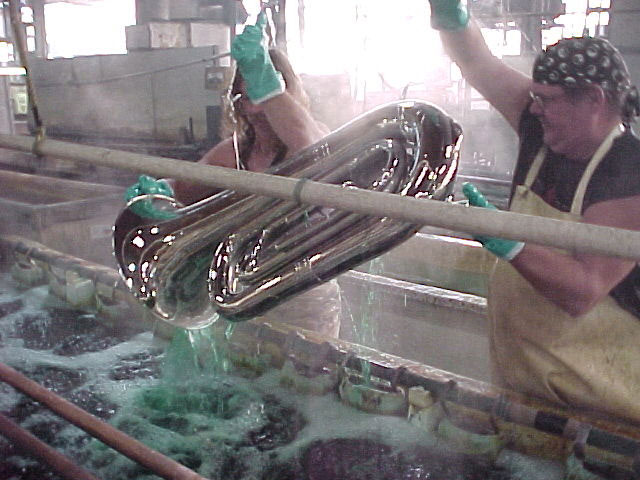
Nickel strike
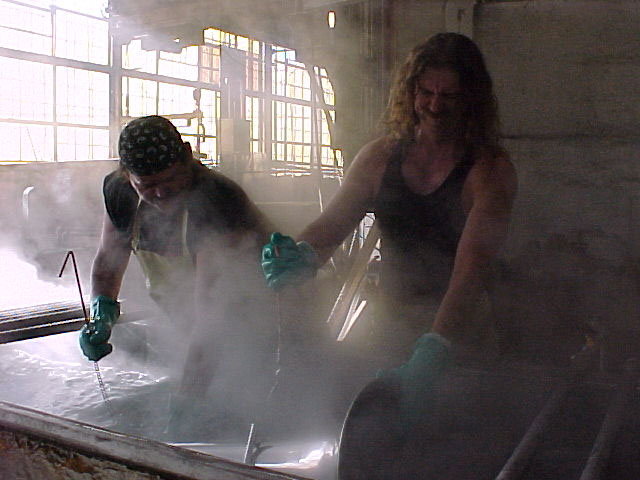
In to the electroless nickel bath,185 degrees F!
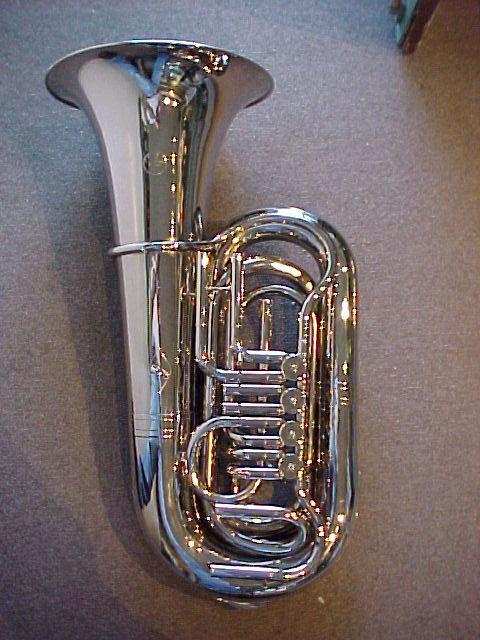
back at the shop and ready for assembly.


